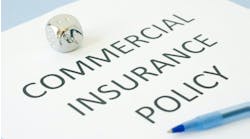Interested in attracting tenants but not sure how to differentiate your building space? This can be a challenge in any market, but the tight economy and changing tenant expectations make it particularly difficult. You can build value and appeal for the rising number of environmentally conscientious companies through low-cost strategies that help tenants achieve LEED for Commercial Interiors certification. Facilitating certification will help lure and maintain tenants, and these strategies benefit your building and operations in the process.
Many company owners understand that sustainable environments impact their bottom line in the form of higher employee productivity, reduced absenteeism and lower turnover. LEED for Commercial Interiors offers companies a framework to provide healthier workplaces and lessen their impacts on the ecology and climate change. But several criteria relate to the base building and build-out processes that are outside the tenants’ purview. They must rely on the building owner’s willingness to effect these changes, making LEED for Commercial Interiors a team effort, requiring willingness from both tenant and owner. In turn, this joint effort provides benefits to both parties.
Strategy Pays
Unico Properties LLC has assets throughout the West Coast. Brian Pearce, Unico’s general manager, says that sustainable practices are a company-wide focus of the Seattle-based organization and he’s now seeing activity in a leasing market that didn’t exist several years ago – the green energy and sustainability industry related sectors. “We continually look at ways to improve our building footprints and lower carbon use in our properties, and we can play that up to these companies and let them know they’ve got a like-minded landlord.”
In one property, the 14-story 1948 commercial office Commonwealth Building in Portland, OR, the lower seven floors were vacant when Unico purchased the building. The company replaced the entire HVAC system on the first seven stories to enhance tenant comfort control and changed from constant airflow to variable air volume fans for each floor. Plaster ceilings precluded Unico from renovating the upper seven stories while they were occupied, and the stagnant economy made it unfeasible to relocate existing tenants and increase their rents. Unico replaced the boilers, however, which solved comfort issues throughout the building. Pearce says they also replaced all the plumbing fixtures with low-flow fixtures, which offered a very quick payback.
Prospective tenants then approached Pearce with a desire to achieve LEED for Commercial Interiors at the platinum level. Unico and the new tenants formed a true partnership to get there: Unico is paying for the necessary measures to achieve LEED’s basic certified level, and the tenants are paying for the additional measures to reach platinum. Some items Unico funded were the installation of CO2 sensors and the cost of a water use analysis and asbestos analysis. The company also provided the means for tenants to conduct onsite construction waste recycling.
Additional strategies owners can implement toward LEED for Commercial Interiors certification include installing efficient lighting, implementing green cleaning policies, ENERGY STAR benchmarking your building, using water-saving irrigation systems combined with drought-tolerant landscaping, providing bicycle racks and shower facilities. You could also consider sub-metering tenant spaces to encourage them to use less energy or enter into triple net leases rather than gross leases.
Articulate and Educate
All these measures position your building for market differentiation, but only if your tenants understand them. Tom Usher, senior director at Cushman & Wakefield of Oregon Inc., says that many tenants have sustainable policies but most can’t tell you what they are. Likewise, if a building owner touts a high ENERGY STAR rating, many prospects don’t understand the implications.
“Landlords have to communicate to tenants the benefits they’re gaining,” says Usher. “And, as commercial real estate brokers, we have a fiduciary responsibility to the ownership to articulate the building’s green benefits to prospects.”
Rather than offer up your ENERGY STAR score, articulate how efficient your building is. Even if the spaces aren’t sub-metered, you can hone in on the value. “The tenant will reap financial rewards by locating in a building with a policy and in-place measures to conserve energy and water rather than a building that doesn’t because all future increases will get passed through to tenant in adjustments to the base year,” explains Doug Deurwaarder, associate director at Cushman & Wakefield of Oregon.
Usher says that landlords are becoming increasingly aware that green practices are attracting more tenants, but maintaining the operational efficiency of the building requires ongoing tenant education. For example, on hot days in Portland, OR, John Russell, owner of the 19-story 200 Market Building (which recently received Platinum certification under LEED for Existing Buildings Operations & Maintenance) sends an email to all tenants reminding them to pull down their shades.
For owners seeking to fill vacant space, improvements that count toward LEED for Commercial Interiors are a win-win situation. The property is better for your enhancements, it draws new prospects, and tenants get more value for their money.
“People would rather locate in in a green building than a non-green building,” says Pearce. “It’s a market differentiator right now. And we need to get these spaces leased.”
Elaine Aye, IIDA, LEED AP, is a principal at Green Building Services Inc. and leads the firm’s Building Management Solutions team. Elaine can be reached at 866-743-4277 or [email protected].


